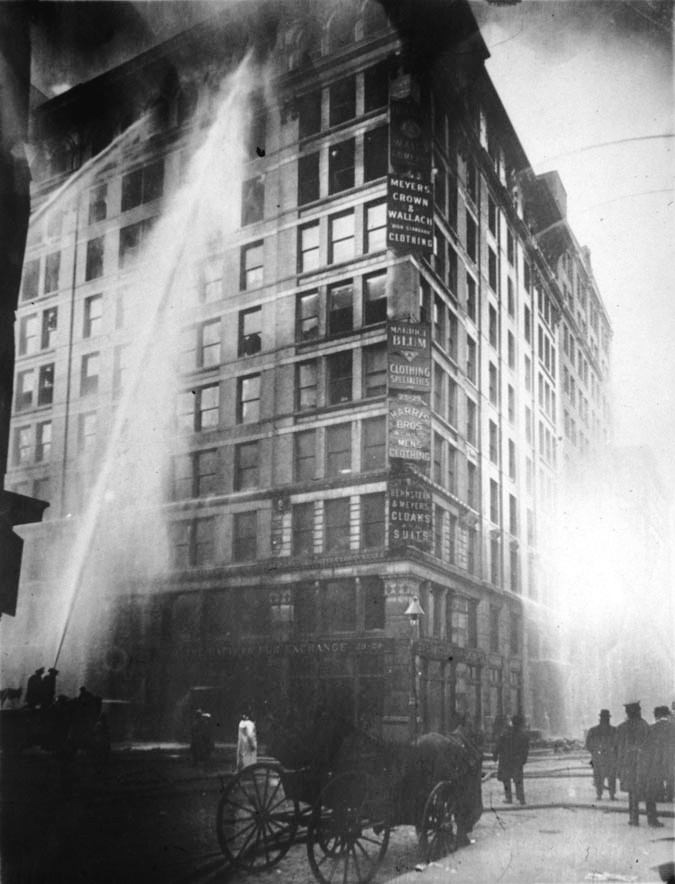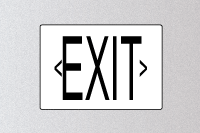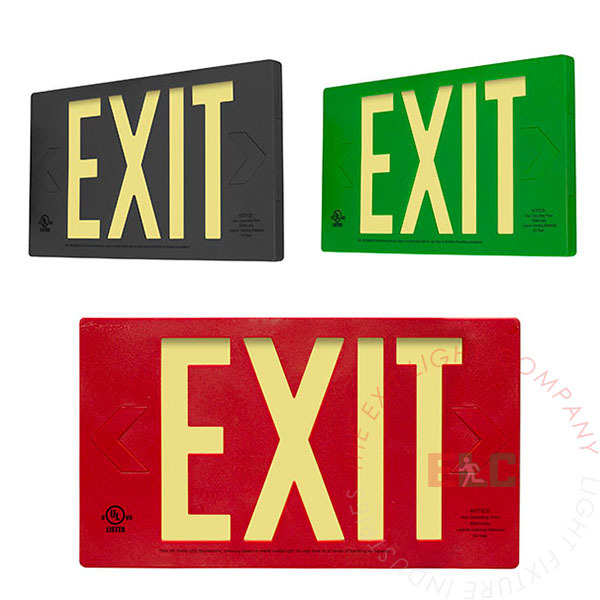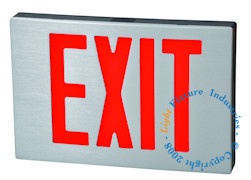They are everywhere! “EXIT Signs” are so ubiquitous that most people rarely ever pay attention to them. Even so, all public buildings (restaurants, offices, and even large residential buildings like hotels or multi-unit condos) are required to have emergency lighting and exit signage to clearly illuminate egress locations and provide well-lit, easy to follow direction to them. In the event of an emergency, when every second counts, they provide a potentially life-saving path to quickly get out of the building.
Yet these signs did not exist a little over 100 years ago. It took a deadly industrial accident, one of the worst in American history, to bring about the changes to code and regulations resulting in the EXIT sign.

On March 25, 1911 a fire burst out in the Triangle Shirtwaist Factory, located on the 8th, 9th, and 10th floors of the Asch building in the Greenwich Village neighborhood of New York City. This event would go down in history as one of the deadliest fires ever, with 146 garment workers losing their lives.
Many of those who died fell or leapt to their deaths, being unable to get out of the burning areas of the building. It turned out that the stairwell doors had been padlocked, a common practice of the times, to discourage employees from stealing product or leaving early.
The resulting media coverage and public outcry led to the establishment of new fire safety regulations including new standards regarding building egress.
Following the recommendations of the state commission, the National Fire Protection Association (NFPA) ratified codes for the first Exit signs. The NFPA had been founded in 1895 by a coalition of Insurance companies. Their purpose was to establish a standardized set of guidelines to help reduce and hopefully eliminate death, injury and economic loss caused by fire. The NFPA guidelines and codes were codified into the basic building codes and standards used throughout the US today. Similar regulations are also used throughout the world.
The Exit Light Company has compiled some useful history and data behind the various codes and regulations. [ https://www.exitlightco.com/Fire-Codes-Regulations.html ]
So the next time you are in a public building, take a minute to look around and make note of the exit signs. Remember, they are there for your safety.



